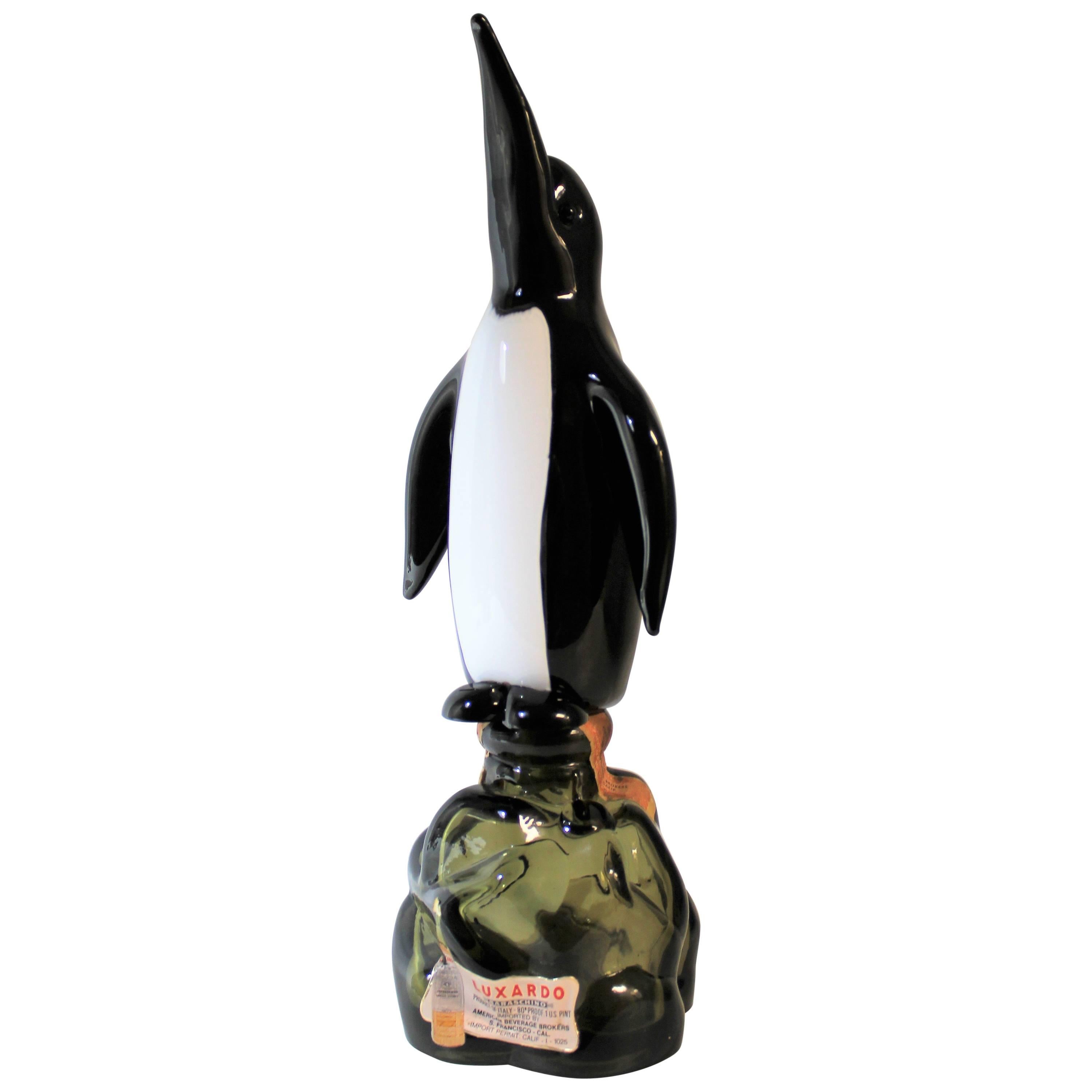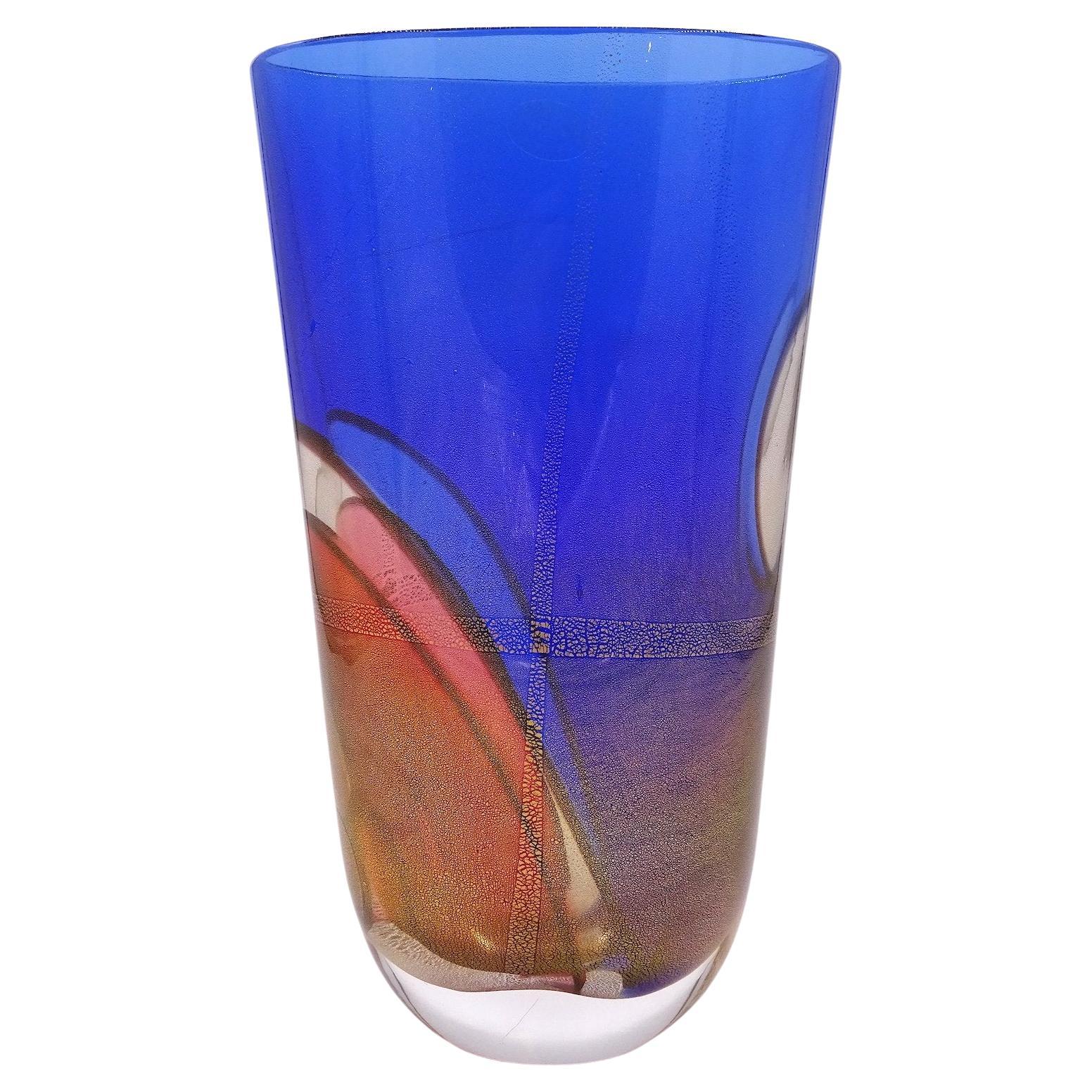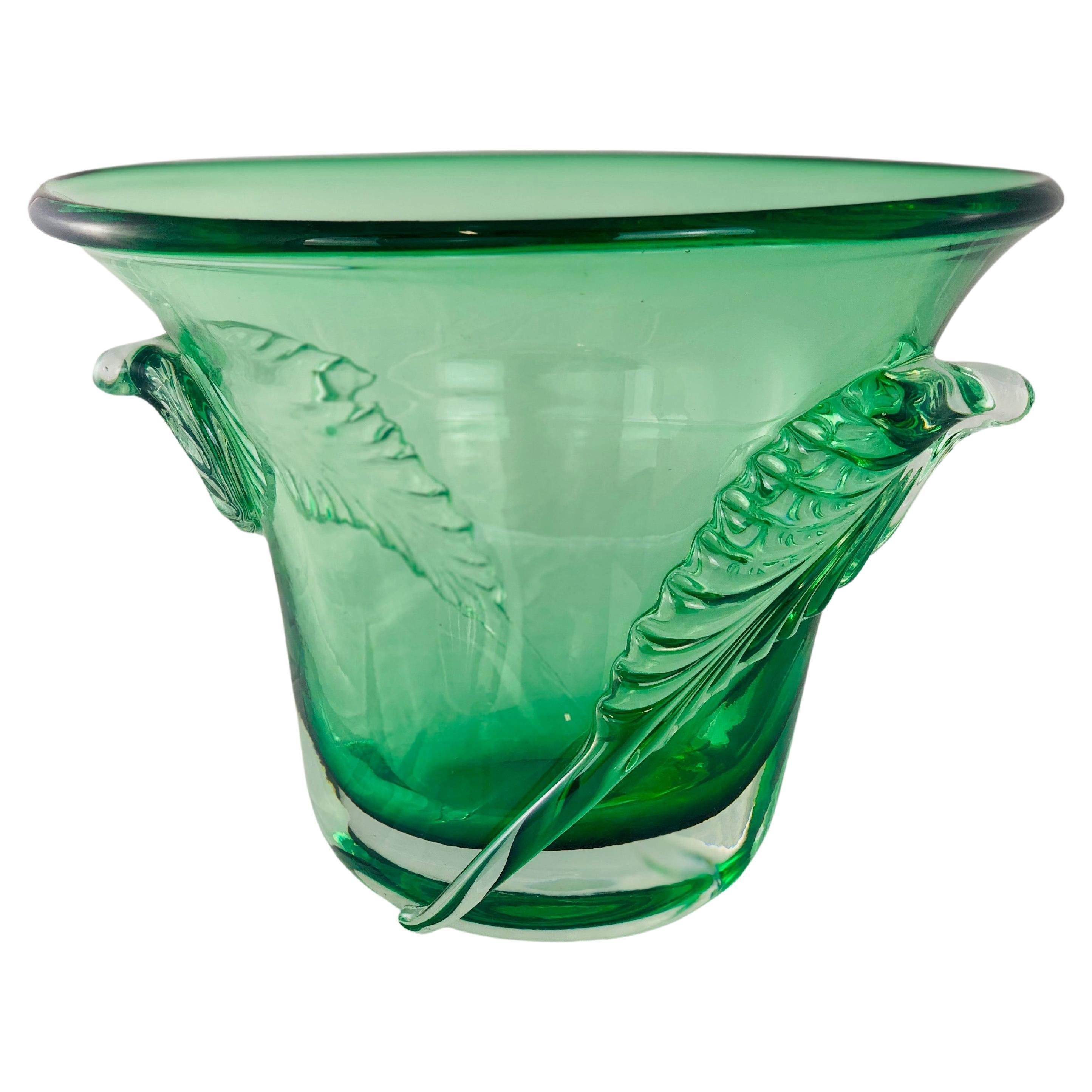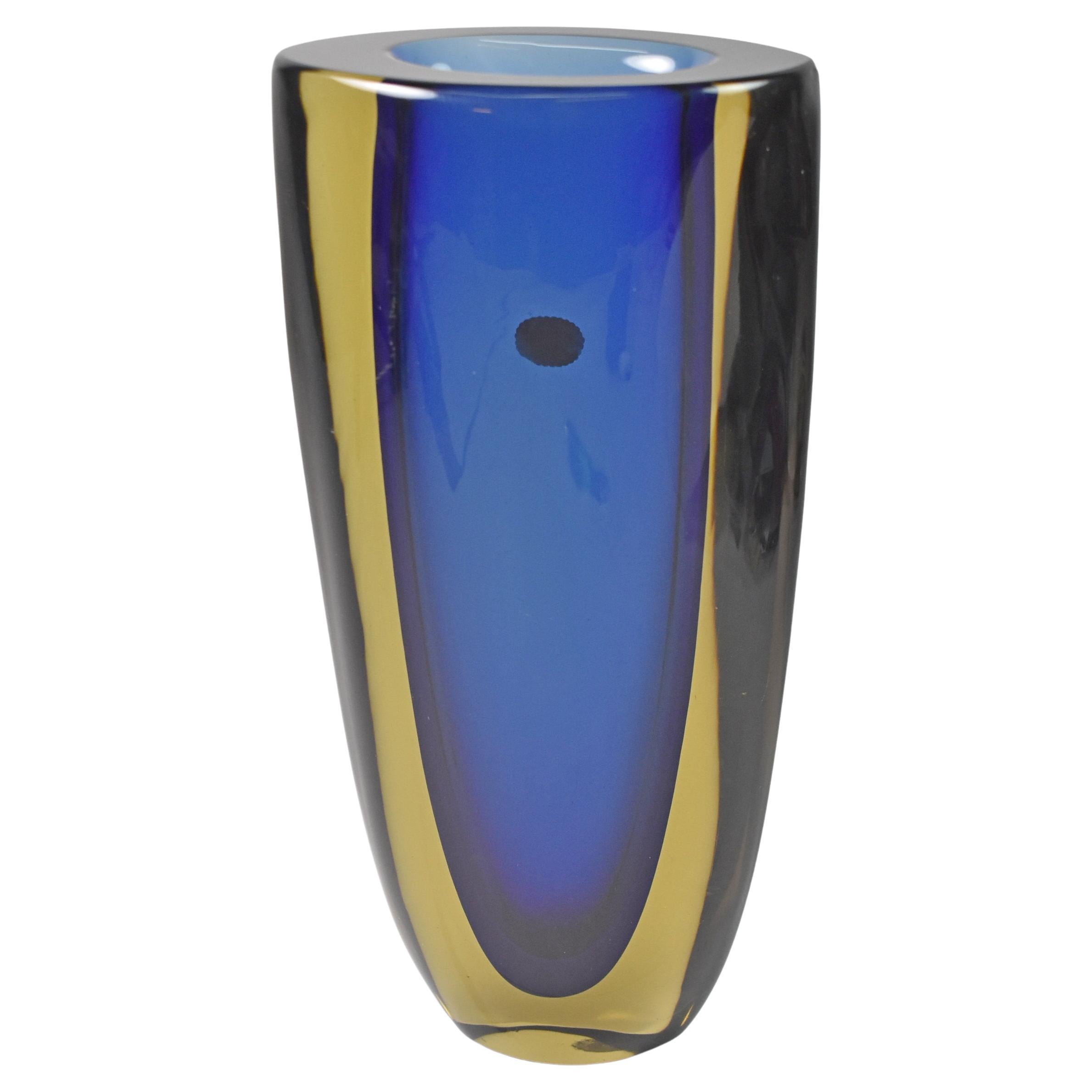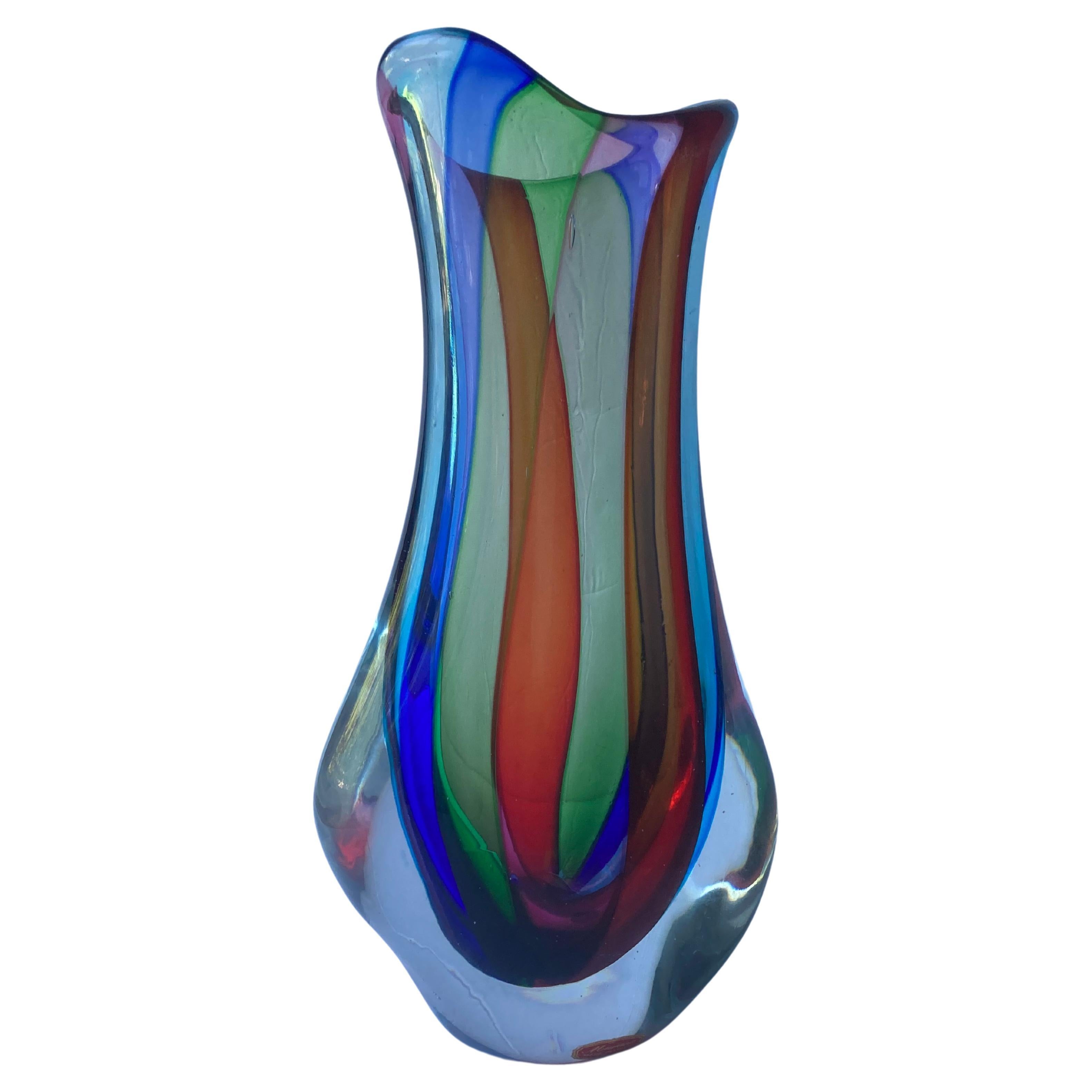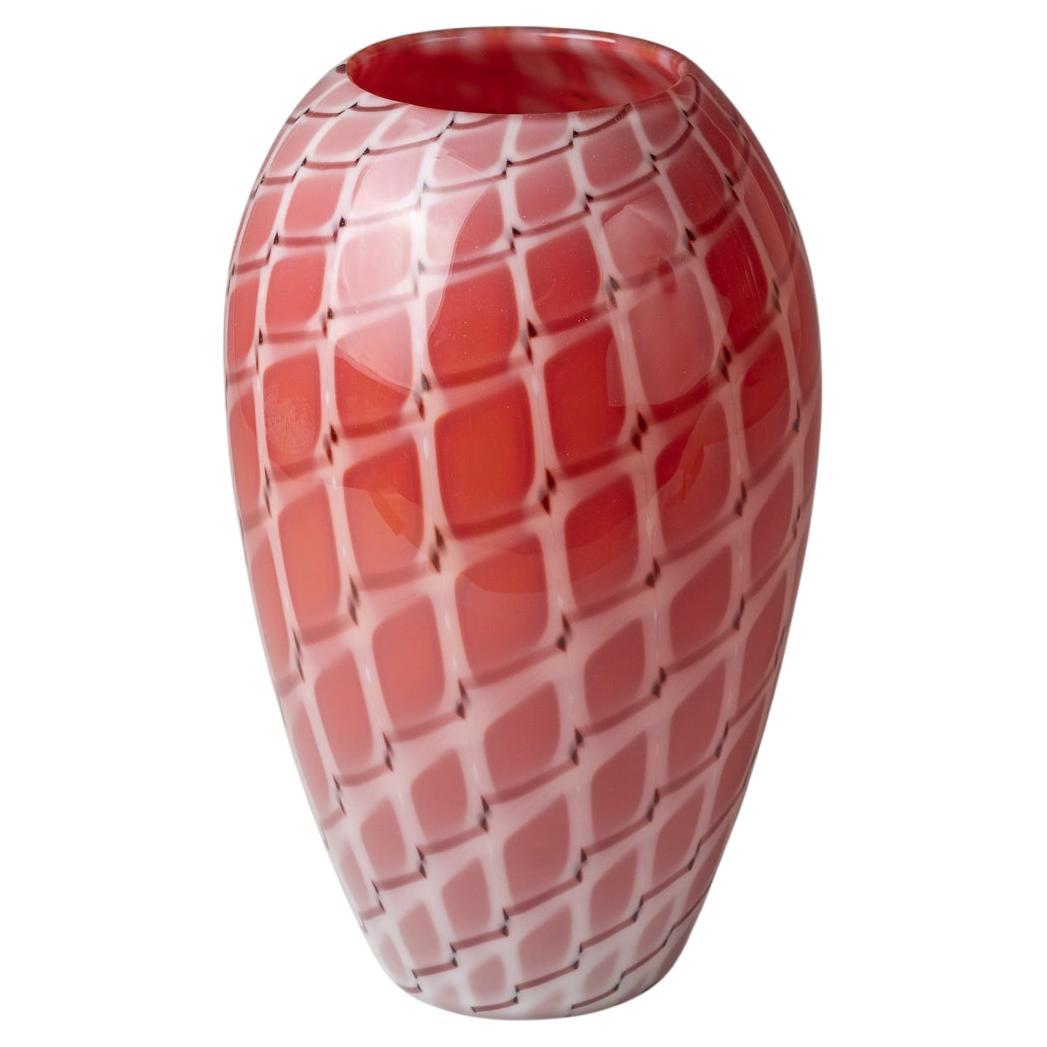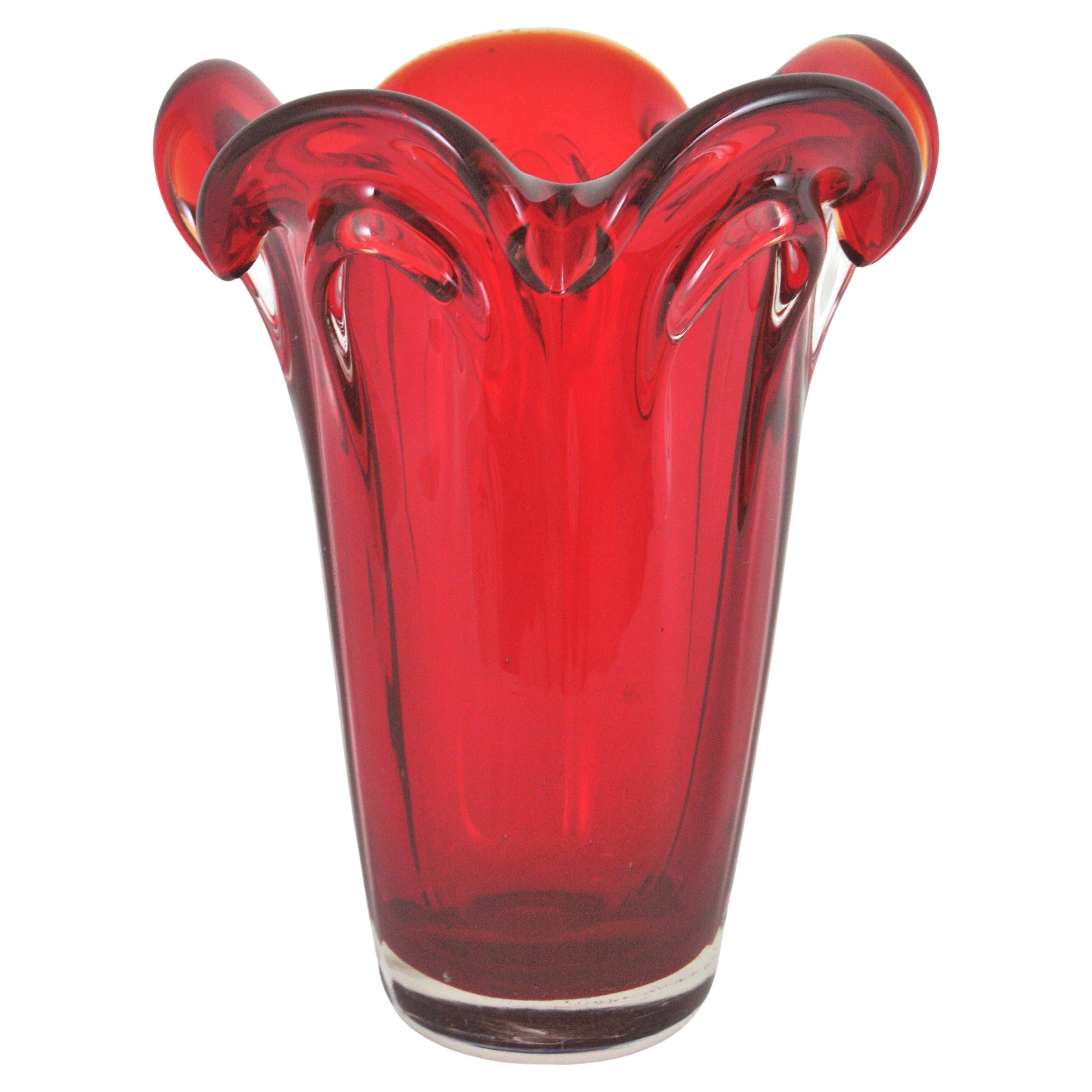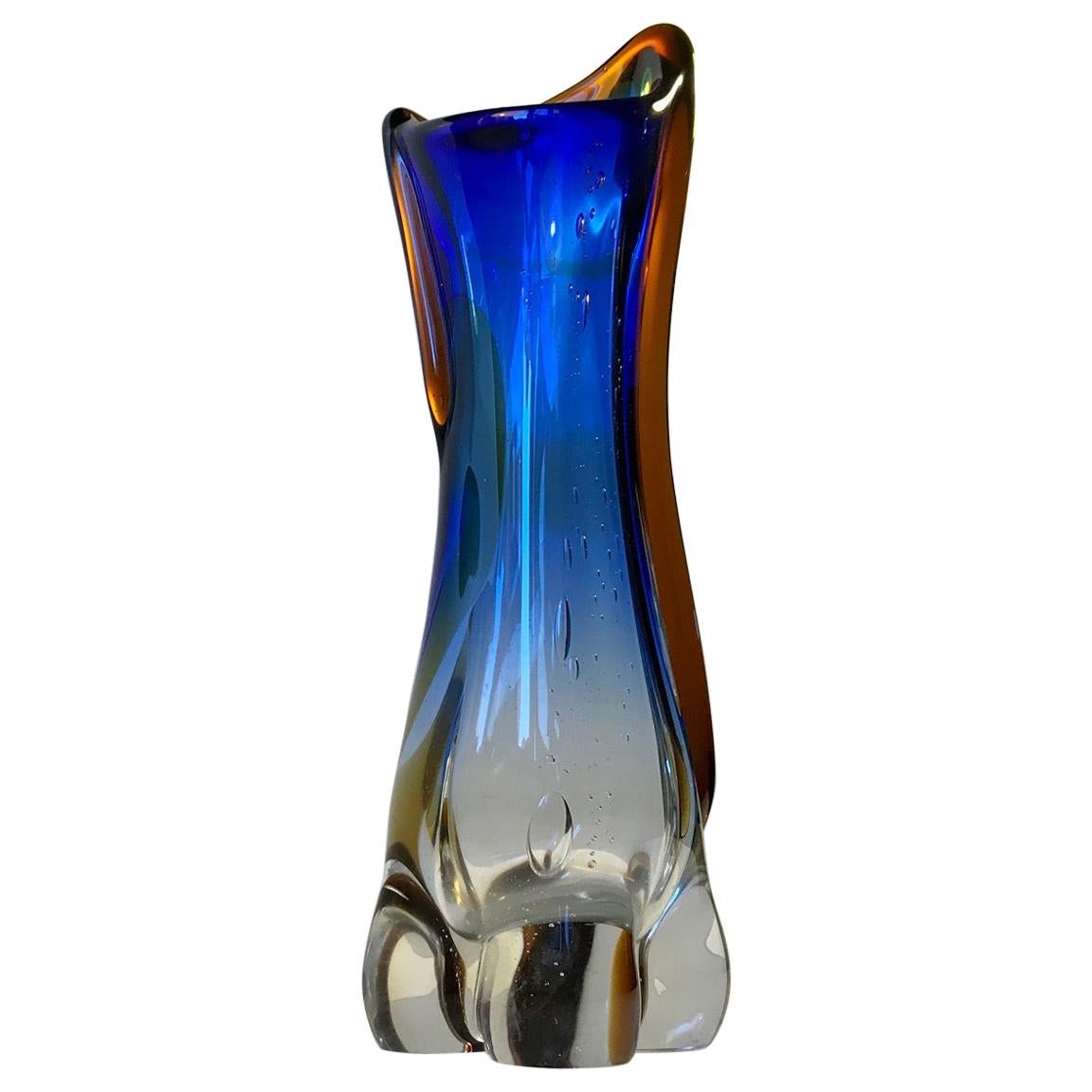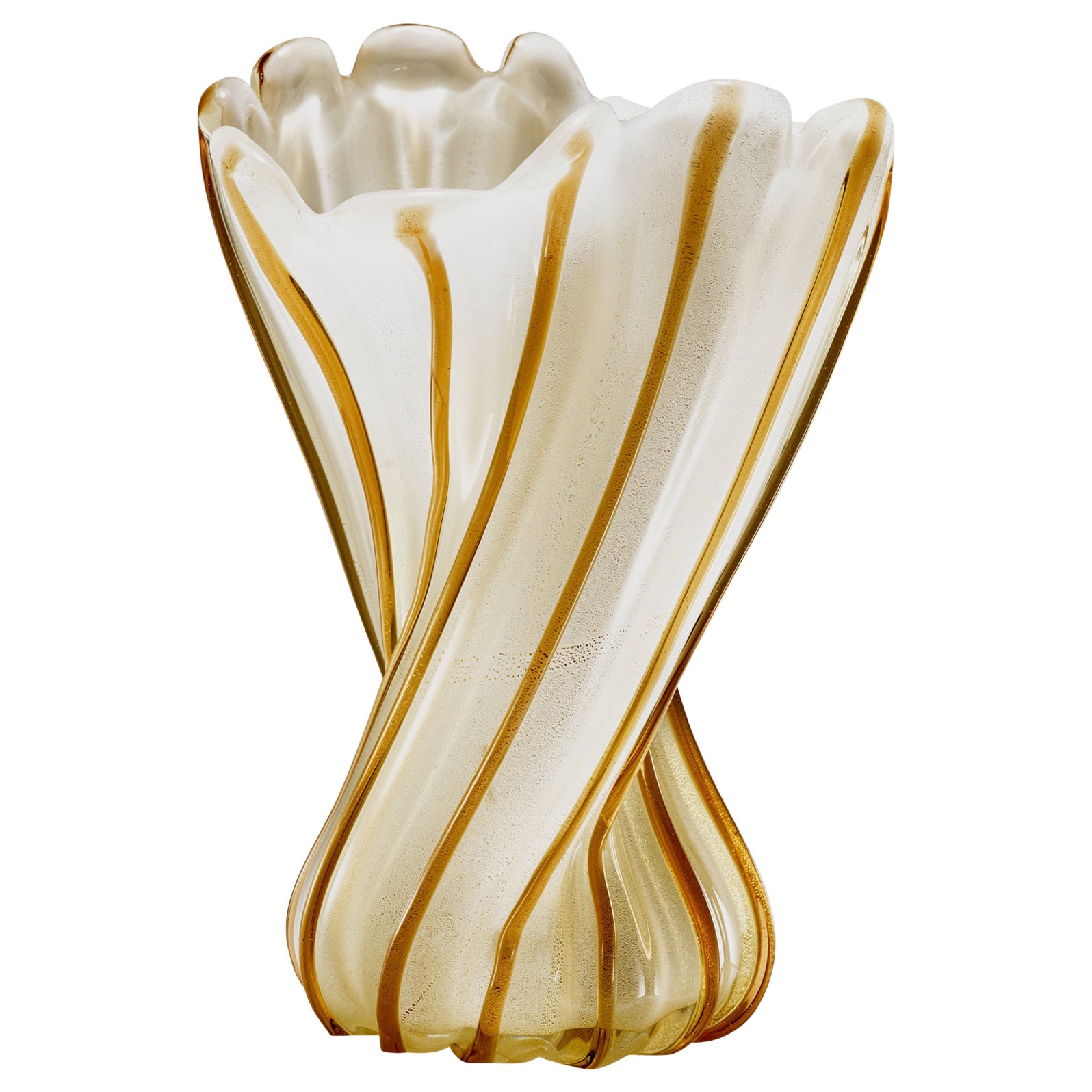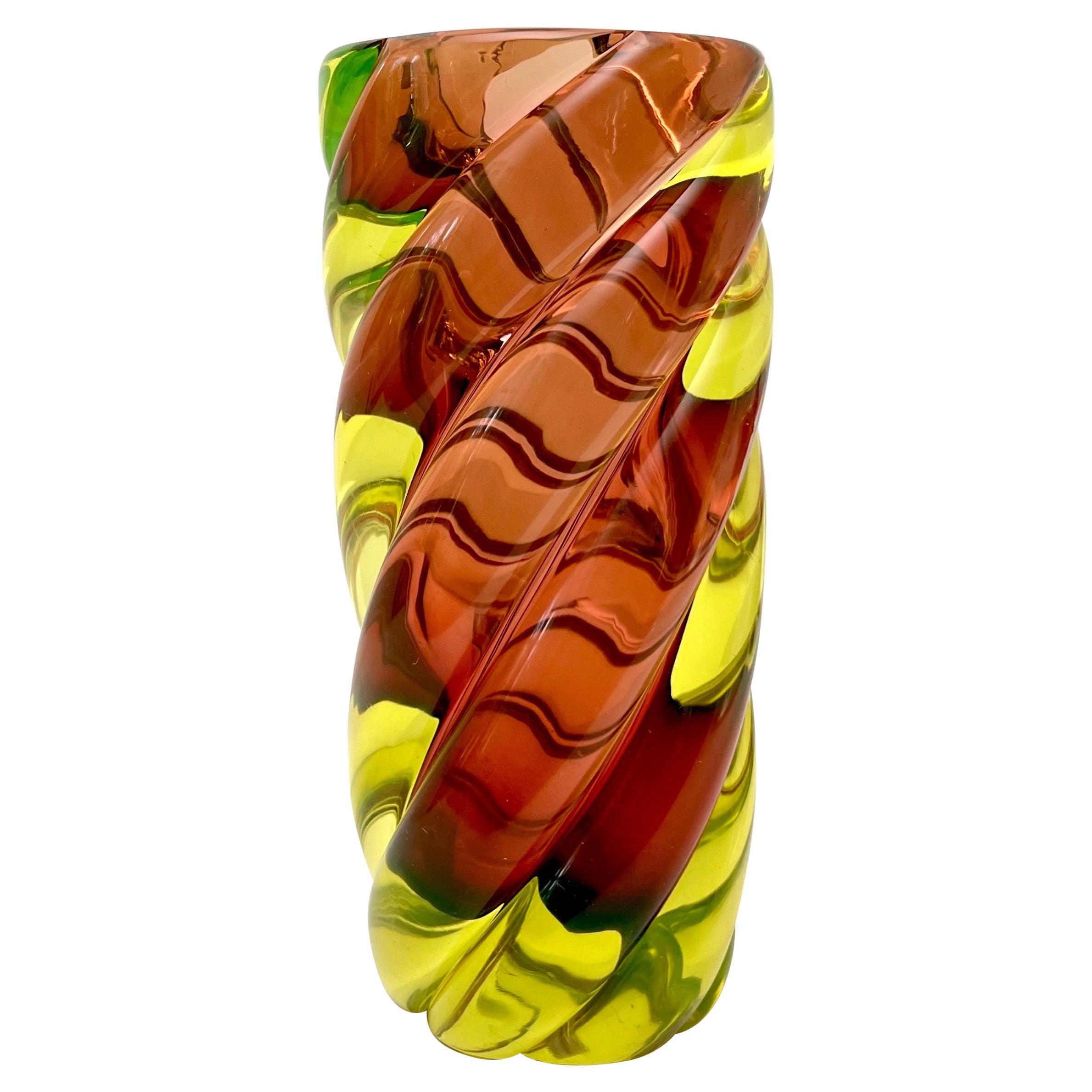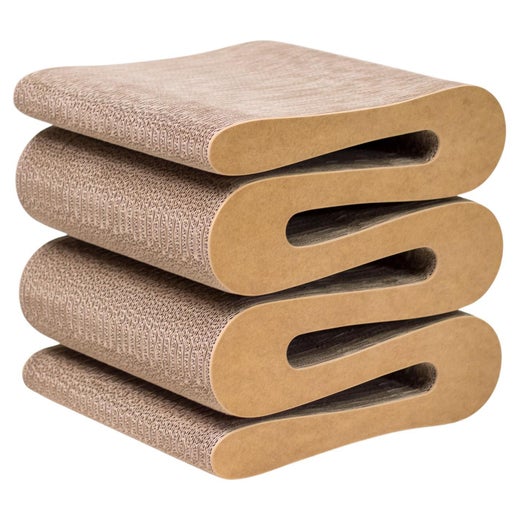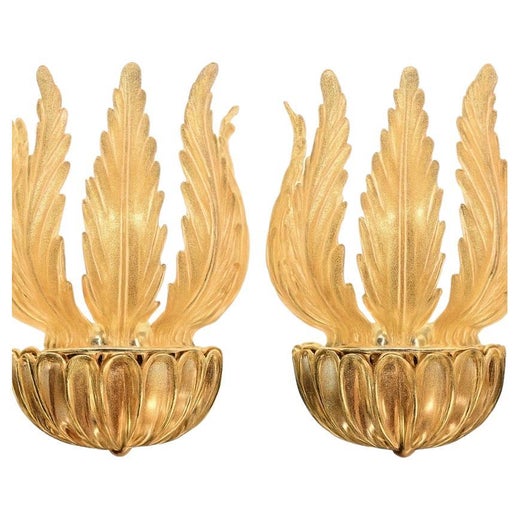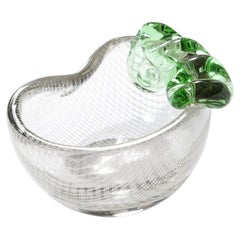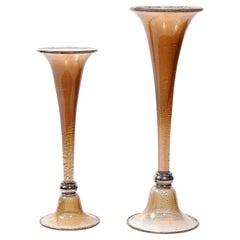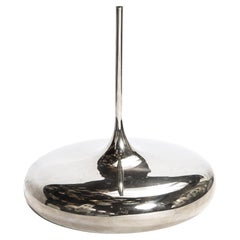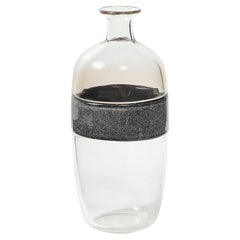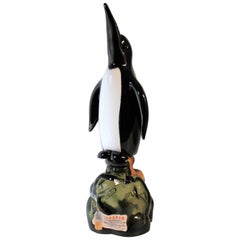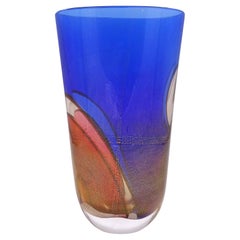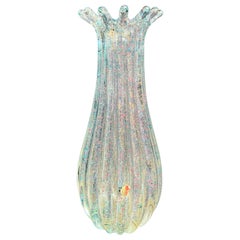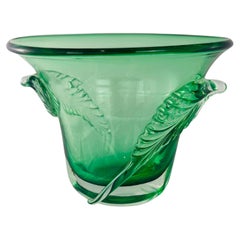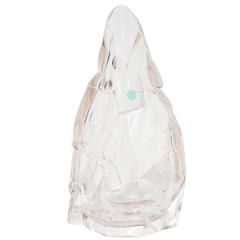
Stunning Archimede Seguso Murano Vase by Frank Gehry for Tiffany and Co.
View Similar Items
Stunning Archimede Seguso Murano Vase by Frank Gehry for Tiffany and Co.
About the Item
- Creator:
- Dimensions:Height: 13 in (33.02 cm)Width: 7 in (17.78 cm)Depth: 5 in (12.7 cm)
- Style:Organic Modern (In the Style Of)
- Materials and Techniques:
- Place of Origin:
- Period:
- Date of Manufacture:2006
- Condition:
- Seller Location:New York, NY
- Reference Number:1stDibs: LU79344482273
Frank Gehry
With magnificent buildings such as the Guggenheim Bilbao, Disney Concert Hall in Los Angeles and the new Foundation Louis Vuitton in Paris, Frank Gehry has changed the nature and spirit of contemporary architecture. Yet the world’s best-known living architect has also enjoyed a prolific career as a designer of artful and functional objects, ranging from furniture to jewelry, that even at smaller scale are as lively and captivating as his architectural designs.
Gehry was born in Toronto and moved with his family to Los Angeles in 1947. He received a degree in architecture from the University of Southern California in 1954 and — after several years of casting about that included a stint in the U.S. Army and studies at Harvard — Gehry opened his architectural practice in L.A. in 1962.
Idiosyncratic renovations to his small, traditional house in Santa Monica — such as cladding portions of the exterior in chain-link fencing and corrugated metal — drew attention to Gehry in architectural circles. Corporate and institutional commissions added to his reputation, culminating in the global acclaim that greeted the opening of the Guggenheim Bilbao in 1997. But the combination of visual dynamism and structural integrity expressed by that building had been evident for decades in Gehry’s designs. In 1972 he introduced a much-admired line of furniture he called Easy Edges. The curves and flowing lines of the pieces, which include the Wiggle chair, seem antithetical to the material are made from: cardboard — a presumably flimsy material that, when stacked, laminated and folded, is actually extraordinarily sturdy.
Many of Gehry’s designs feature an abstracted fish motif. For the architect, it is a symbol of vitality, strength and flexibility. The fish appears in a group of 1982 plastic lamps created for Formica (and exhibited by the Jewish Museum in New York in 2010). Gehry used the motif in crystal goblets for Swid Powell (1990), his Pito kettle for Alessi (1992) and as earrings for a 2006 jewelry collection for Tiffany that also includes torqued rings, necklaces and bangles.
Gehry returned to furniture design in 1992 with a remarkably energetic line of furniture for Knoll with frames and seating made of bent, lightweight wooden strops. (The pieces' names, such as Power Play and Cross Check, derive from ice hockey.) In 2004, Heller released a group of twisted, faceted furnishings in molded polyethylene meant to evoke Gehry’s architecture. But — whether its tableware, jewelry or furniture — all Gehry’s designs do that--sharing an animated aesthetic built on a solid foundational core. To possess a piece of Gehry design is to own one of his buildings, in miniature.
Find vintage Frank Gehry chairs, tables and other furniture on 1stDibs.
Archimede Seguso
Archimede Seguso redefined a 650-year family history of Murano glass-making with brilliance and novel techniques, elevating him to an exemplar for the maestros of his time as well as for future generations of glassmakers. This next generation included his sons and grandsons, who carried on and further expanded the family legacy of Venetian art glass. The survival and revival of traditional glassblowing combined with unique design are the legacies left behind by a master.
Seguso grew up in the family furnaces of the Soffieria Barovier Seguso and Ferro, where his training began at age 11. By the time he turned 20, he was a maestro in his own right, joining the family business as a partner.
In 1933 the company changed its name to Seguso Vetri D’Arte, and Seguso gained sole control. He collaborated with designers Flavio Poli and Vittorio Zecchin, which allowed him to achieve artistic sovereignty leading to the opening in 1946 of his own furnace, Vetreria Seguso Archimede. There, he could explore his design ideas with creative freedom. In 2007, the 23rd generation of Seguso glassmakers took the lead at Seguso Vetri D’Arte. Brothers Gianluca, Pierpaolo and Gianandrea Seguso carry a six-century dynasty of Seguso glass into the 21st century.
Archimede Seguso’s art glass pays homage to tradition. Seguso studied and mastered techniques from centuries past, but he also pioneered innovative approaches, such as submersion and unconventional color constitutions. He awarded future generations with stunning and unprecedented effects, such as ribbed textures, rings, needle shapes and the appearance of embedded objects.
A lifetime of achievement created by Seguso is honored in museums worldwide, such as the Victoria and Albert Museum in London, MoMA in New York and Museum Kunstpalast in Dusseldorf, to name a few. His exhibit resume spans decades, beginning with XX Biennale, Venezia, in 1936. It includes a 1989 exhibit of “Il Maestro dei Maestri” at Tiffany & Co., New York, and 2013 exhibitions at Musée Maillol in Paris and Museo della Basilica di San Marco in Venice.
On 1stDibs, find vintage Archimede Seguso glass, decorative objects, lighting and mirrors alongside a collection from his brother Angelo Seguso and his grandsons’ firm Seguso Viro.
More From This Seller
View AllVintage 1960s Italian Mid-Century Modern Decorative Bowls
Murano Glass
Vintage 1970s Italian Mid-Century Modern Vases
Gold
Vintage 1970s American Mid-Century Modern Vases
Chrome
Vintage 1960s Italian Mid-Century Modern Vases
Murano Glass
Vintage 1960s Italian Mid-Century Modern Abstract Sculptures
Murano Glass
Vintage 1940s Swedish Art Deco Vases
Sterling Silver
You May Also Like
Mid-20th Century Italian Mid-Century Modern Animal Sculptures
Art Glass
Vintage 1980s Italian Modern Glass
Murano Glass
Mid-20th Century Italian Mid-Century Modern Vases
Murano Glass
Vintage 1940s Italian Mid-Century Modern Vases
Murano Glass
20th Century Vases
Glass
Late 20th Century Italian Post-Modern Glass
Murano Glass
Recently Viewed
View AllRead More
Five of Our Favorite Pieces From the Cooper Hewitt’s Storage
The off-site collection comprises more than 215,000 pieces.
These New York Architects Love a Complicated Project
From Brooklyn townhouses to Maine campgrounds, Trattie Davies and Jonathan Toews relish a challenge, like transforming a former warehouse space into the new 1stdibs Gallery.
